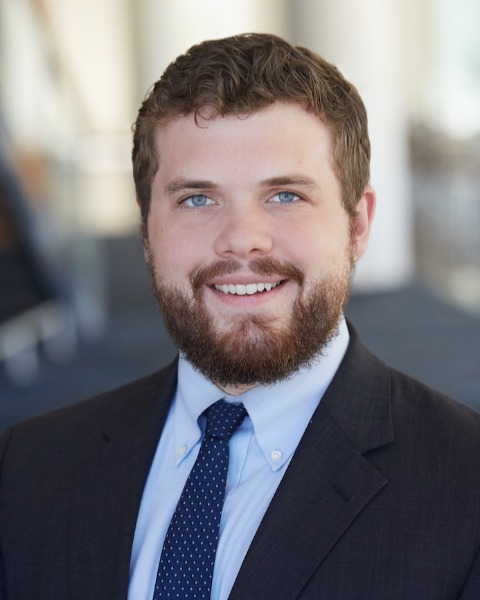General Thoracic
Category: Scientific Abstract: Oral/Poster
The Impact of Incomplete Radiotherapy on Survival in Locally Advanced Esophageal Cancer
K. W.. Freischlag1, P. Ten Eyck2, L. Wendt2, J. C.. Keech1, E. V.. Arshava1, A. M.. Swatek1, B. G.. Allen3, K. Parekh1
1Department of Cardiothoracic Surgery, University of Iowa Carver College of Medicine, Iowa City, Iowa 2Institute for Clinical and Translational Science, University of Iowa, Iowa City, Iowa 3Department of Radiation Oncology, University of Iowa Carver College of Medicine, Iowa City, Iowa
1Department of Cardiothoracic Surgery, University of Iowa Carver College of Medicine, Iowa City, Iowa 2Institute for Clinical and Translational Science, University of Iowa, Iowa City, Iowa 3Department of Radiation Oncology, University of Iowa Carver College of Medicine, Iowa City, Iowa

Kyle W. Freischlag, MD, MHS (he/him/his)
General Surgery Categorical Resident
Department of Surgery, University of Iowa Carver College of Medicine
Iowa City, Iowa, United States
Presenting Author(s)
Disclosure(s):
Kyle W. Freischlag, MD, MHS: No financial relationships to disclose
Purpose: While clinical trials have shown increased survival for patients with locally advanced stage II and stage III esophageal cancer who undergo neoadjuvant radiotherapy and surgical resection, the impact of incomplete therapy is unknown. Our goal was to examine the impact of incomplete neoadjuvant radiotherapy on overall survival (OS).
Methods: All adults in the NCDB with stage II and III esophageal adenocarcinoma or squamous cell carcinoma who were diagnosed from 2010 to 2020, underwent definitive surgery, and received preoperative chemoradiotherapy were identified. Patients were stratified upon completion of neoadjuvant radiotherapy. Baseline characteristics were established. Survival analysis was completed using the Kapan-Meier method. Three adjusted multivariate models were developed. Adjusted odds ratios (OR) and hazard ratios (HR) were reported.
Results: A total of 10,238 patients were identified and, of these, 2.4% (241) did not complete the prescribed dose of neoadjuvant RT. Complete RT was associated with above median education (OR 0.70 95% CI 0.50-0.97, P=0.03), above median center volume (OR 0.49, 95% CI 0.24-0.98, P=0.04), and receiving all care at the same center (OR 0.71, 95% CI 0.52-0.96, P=0.03). Patients who received incomplete neoadjuvant RT were more likely to undergo adjuvant RT (4.1% vs. 0.6%, P< 0.01), have positive lymph nodes (1 vs. 0 nodes, P< 0.01), and have positive surgical margins (11.9% vs. 5.6%, P< 0.01). Incomplete therapy significantly lowered 5-year OS (28.0% vs. 39.3%, P< 0.01), and, in the adjusted model, was associated with increased the chance of death (HR 1.40, 95% CI 1.17-1.68, P< 0.01). Increasing radiation dosage up to 39 Gy lowered the risk of death but further increases above 39 Gy showed no additional benefit.
Conclusion: Achieving the prescribed radiation dose of 41.4 to 50.4 Gy is associated with a survival benefit in patients with locally advanced esophageal cancer (Figure 2). Efforts should be made to align all aspects of multimodal oncology care.
Identify the source of the funding for this research project: Self
